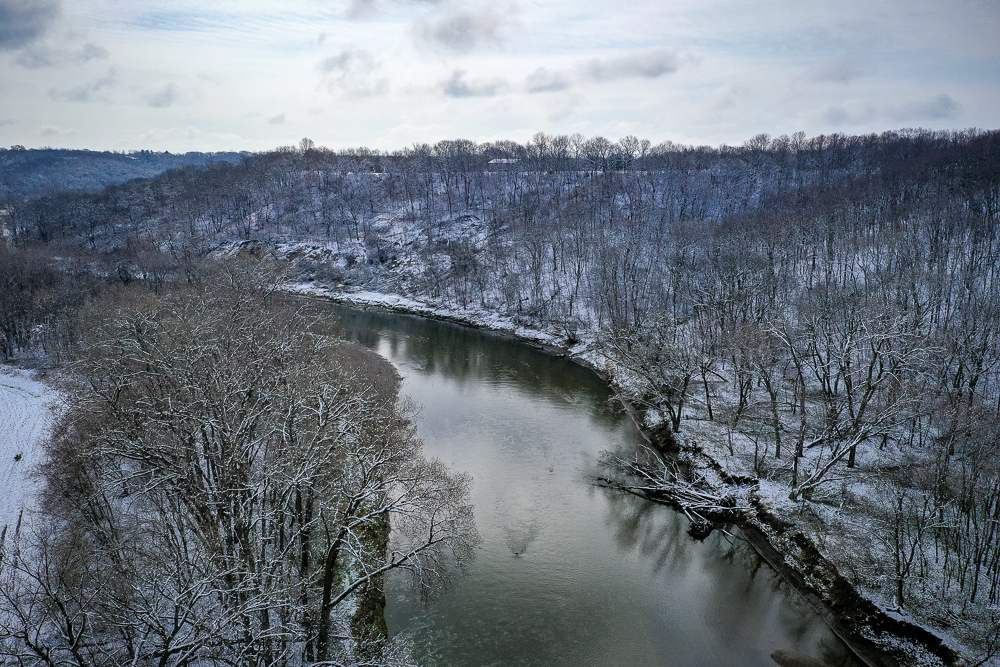
The Iowa Soybean Association collects and analyzes thousands of water samples per year from tile lines, streams and rivers. The information gathered from water monitoring helps individuals make better decisions on the farm and in watersheds across Iowa. (Photo: Joseph L. Murphy/Iowa Soybean Association)
Tile monitoring as a management tool
December 23, 2020
As Iowa farmers focus on strengthening and improving the opportunities for profitability from their fields, many are using water monitoring as an important management tool. This year’s results are just beginning to be analyzed and will be shared in detail this winter. Even as results can vary year to year due to weather extremes, the data provided by tile water testing is helping farmers make better field management decisions.
“As we think about profitability and water monitoring, we’re focused on the nitrate levels,” said Anthony Seeman, senior field services lab and data manager with the ISA. “We know management does matter when it comes to those levels and we can work to see if there are savings to capture in labor, equipment, practices and application rates.”
Seeman presented early results during a Dec. 4 ISA farm profitability webinar.
Seeman said that while every farm is different, keeping nitrogen in place should be a focus.
“Everyone and every field shares that challenge,” said Seeman. “Farmers are working to prevent that movement and keep it where their crops need it.”
ISA has worked with farmers regarding tile water monitoring for decades, and the long-term approach is important, even when weather events don’t allow for consistent results.
“We like that long-term data, but then you also work with years like this one. We had significant drought in the western part of the state and the derecho impacting our ability to collect samples on the eastern side,” said Seeman.
Those drought-affected areas will be holding residual nitrogen in the system and will inevitably move with spring rains. Side dressing rates, fertilization adjustments, and more cover crops in the landscape may provide best management practices to mitigate that movement.
“We’re still working to learn more about cover crops and how this practice may prevent nitrate from reaching tile lines,” said Seeman. “We’ll be looking to see if cover crops can prevent those big swings and keep that N more local.”
Monitoring helping with management decisions
Harold Hill, a Minburn-area farmer, has been involved with ISA water monitoring since 2013. His interest and focus in monitoring has continued from his days working the farm to the young farmer to whom he rents his land.
“I got involved because I wanted to find out the nitrate levels in my tile,” he said. “We are connected to the tile system in the area, so it’s a challenge to determine exactly what my impact is, but it’s important to understand.”
The work with ISA is helping him make better field management decisions.
“I built a pond which is sourced by a large county tile and I’ve watched those nitrate levels vary year to year,” he said. “I considered installing a bioreactor, but the information I’ve learned about my tile lines, from nitrate loads to the volume of water moving through them, showed me my tile lines were too big for such a practice to be effective.”
While his lines drain to the North Raccoon River, Hill is monitoring nitrate levels above that entry point.
“We’ve seen moderately high levels higher up in the line, but by the time it’s reaching the river, those levels are lower.”
Hill is using this long-term monitoring data to gauge the impact of newly-added cover crops on a portion of his acres.
“I’m involved with a three-year program with Heartland Cooperative and planting rye,” said Hill. Even with blown-over corn this fall, his rye is growing. He’s interested in learning the impact of the practice.
“It’s a challenge when we are a part of a tiling system and the weather always makes the effort a bit of a moving target, but I want to be thinking long term,” said Hill. “We can’t control the weather, but the more I understand my tile monitoring data and use it to make adjustments in management and practices, we move the needle.”
Watch the full webinar.
Back